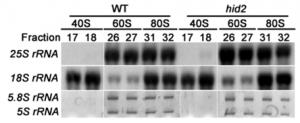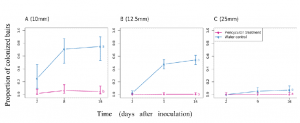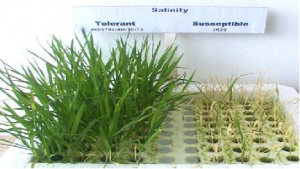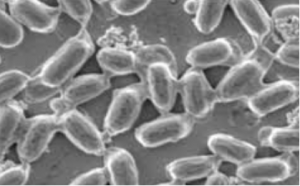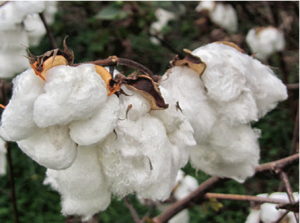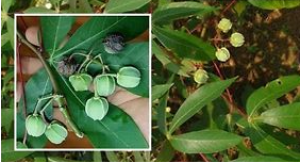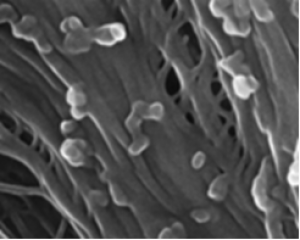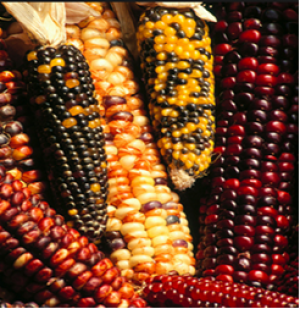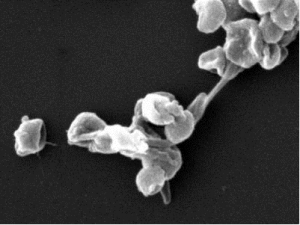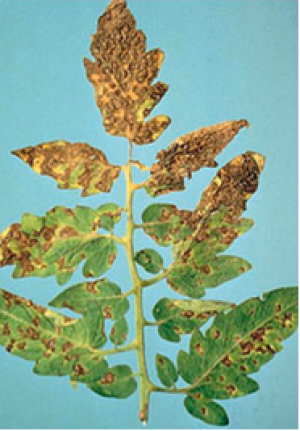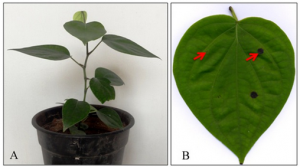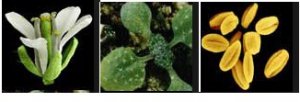|
StaufenC facilitates utilization of the ERAD pathway to transport dsRNA through the endoplasmic reticulum to the cytosol
Saturday, 2024/06/29 | 07:31:59
|
|
Jinmo Koo and Subba Reddy Palli PNAS; June 17, 2024; 121 (26) e2322927121; https://doi.org/10.1073/pnas.2322927121 SignificanceEndocytosed double-stranded RNA (dsRNA) in endocytic vesicles is known to merge with endosomes. Endosomal escape of dsRNA has been the focus of the development of dsRNA delivery technologies for improving RNA interference (RNAi). Here, we describe an intracellular route of dsRNA in Colorado potato beetle (CPB) cells, which exhibit an exceptionally high RNAi response. CPB cells use a coleopteran-specific dsRNA-binding protein, StaufenC, to efficiently transport dsRNA through the endoplasmic reticulum (ER) to the cytosol. These results challenge the current belief that endosomes are the major dsRNA release sites. The information on this mechanism of dsRNA intracellular transport in CPB cells could be used to develop better delivery technologies to enhance RNAi efficiency. AbstractRNA interference (RNAi) is more efficient in coleopteran insects than other insects. StaufenC (StauC), a coleopteran-specific double-stranded RNA (dsRNA)-binding protein, is required for efficient RNAi in coleopterans. We investigated the function of StauC in the intracellular transport of dsRNA into the cytosol, where dsRNA is digested by Dicer enzymes and recruited by Argonauts to RNA-induced silencing complexes. Confocal microscopy and cellular organelle fractionation studies have shown that dsRNA is trafficked through the endoplasmic reticulum (ER) in coleopteran Colorado potato beetle (CPB) cells. StauC is localized to the ER in CPB cells, and StauC-knockdown caused the accumulation of dsRNA in the ER and a decrease in the cytosol, suggesting that StauC plays a key role in the intracellular transport of dsRNA through the ER. Using immunoprecipitation, we showed that StauC is required for dsRNA interaction with ER proteins in the ER-associated protein degradation (ERAD) pathway, and these interactions are required for RNAi in CPB cells. These results suggest that StauC works with the ERAD pathway to transport dsRNA through the ER to the cytosol. This information could be used to develop dsRNA delivery methods aimed at improving RNAi.
See https://www.pnas.org/doi/10.1073/pnas.2322927121
Figure 2: CPB StauC protein is localized to the ER. (A) Protein domain comparison between CPB StauC and Stau. SP: signal peptide in N-terminal, DSB: dsRNA-binding domain, KDEL: ER retention sequence in C-terminal. (B) StauC protein (60 kDa) detection in different cellular fractions of CPB cells using western blot analysis. An equal amount of protein lysates was loaded into each well; the gels were transferred to membrane and hybridized with StauC antibodies. (C) Confocal observation of StauC-EGFP fusion protein with (w/KDEL) or without (wo/KDEL) C-terminal KDEL motif overexpressed in CPB cells. ER staining dye (blue) was used to label the ER in CPB cells. (D) Fraction of green (fusion protein) overlapping with blue (ER) in confocal images comparing CPB cells overexpressed with fusion construct w/KDEL and wo/KDEL. Mean ± SE (N = 3) are shown (*P value < 0.05). |
|
|
|
[ Other News ]___________________________________________________
|


 Curently online :
Curently online :
 Total visitors :
Total visitors :
(230).png)

